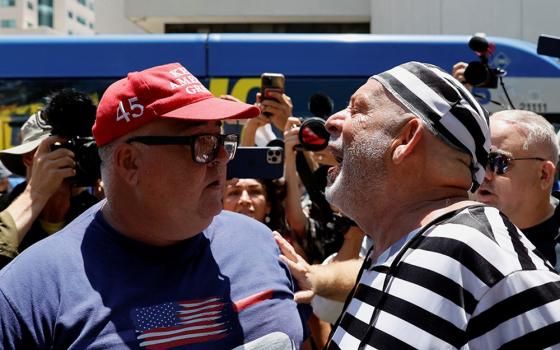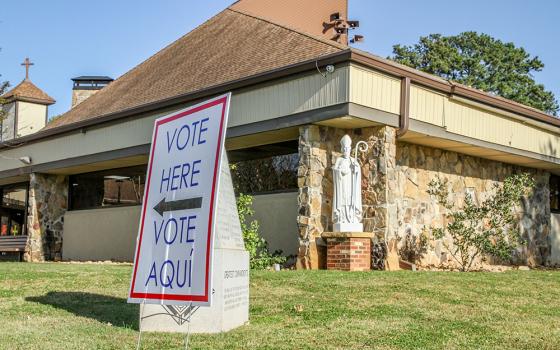THEOLOGICAL HIGHLIGHTS OF VATICAN II
By Joseph Ratzinger
Published by Paulist Press, $16.95
After each of the four sessions of the Second Vatican Council, Joseph Ratzinger, the young German theologian who acted as expert adviser to Cardinal Joseph Frings of Cologne, Germany, published a booklet reporting on the session just concluded. In 1966, the year after the council ended, these booklets were gathered into book form, in both German and English. This book has now been reissued, with an introduction by Jesuit Fr. Thomas Rausch.
Although the first session of the council produced no concrete results, it was, according to Ratzinger, of outstanding importance for two reasons. In the first place, in refusing to endorse the materials prepared by the Roman curia, “the body of bishops” demonstrated that it “was a reality in its own right.” The preparatory schema on revelation, for example, was “utterly a product of the ‘antimodernist’ mentality,” according to Ratzinger. Would the “almost neurotic denial of all that was new” be continued? Or would the church “turn over a new leaf, and move on into a new and positive encounter with its own origins, with its brothers, and with the world of today? Since a clear majority of the fathers opted for the second alternative, we may even speak of the council as a new beginning.”
In rejecting the schema on revelation “the council had asserted its own teaching authority. And now, against the curial congregations which serve the Holy See and its unifying functions, the council had caused to be heard the voice of the episcopate -- no, the voice of the universal church.”
In the second place, the first chapter of the Constitution on the Liturgy “contains a statement that represents for the Latin church a fundamental innovation.” The statement in question is the stipulation that, within certain limits, episcopal conferences “possess in their own right a definite legislative function.” Ratzinger sees this as of outstanding importance: “Perhaps one could say that this small paragraph, which for the first time assigns to the conferences of bishops their own canonical authority, has more significance for the theology of the episcopacy and for the long desired strengthening of episcopal power than anything in the Constitution on the Church itself.”
 Whereas previous popes had “regarded the curia as their personal affair on which a council had no right to encroach,” as a result of Pope Paul VI’s opening address to the second session, “the theme of curial reform was ... in a sense officially declared open for council debate.” At the heart and center of debates on the schema on the church was the notion of collegiality: “Just as Peter belonged to the community of the Twelve, so the pope belongs to the college of bishops, regardless of the special role he fills, not outside but within the college.” Later discussion of the schema on bishops sought concretely to implement the concept of collegiality by decentralizing power to bishops and episcopal conferences, and by proposing appropriate forms of centralization through the creation of “an episcopal council in Rome.”
Whereas previous popes had “regarded the curia as their personal affair on which a council had no right to encroach,” as a result of Pope Paul VI’s opening address to the second session, “the theme of curial reform was ... in a sense officially declared open for council debate.” At the heart and center of debates on the schema on the church was the notion of collegiality: “Just as Peter belonged to the community of the Twelve, so the pope belongs to the college of bishops, regardless of the special role he fills, not outside but within the college.” Later discussion of the schema on bishops sought concretely to implement the concept of collegiality by decentralizing power to bishops and episcopal conferences, and by proposing appropriate forms of centralization through the creation of “an episcopal council in Rome.”
Ratzinger’s reflections on the debates on ecumenism, the schema on which may be seen as “a pastoral application of the doctrine in the schema on the church,” contain an interesting discussion on the relationship between “churches” and “the church” in the form of a detailed response to the Protestant ecclesiology laid out in October 1963 in a lecture in Rome by Edmund Schlink of Heidelberg, Germany.
This session saw the promulgation of the first two conciliar texts, the Constitution on the Liturgy and the Decree on the Media of Social Communication. Paul VI’s formula of approbation broke with the custom, since the late Middle Ages, of regarding conciliar decisions being put into effect as papal law: “Paul, bishop, servant of the servants of God, together with the council fathers” (my stress).
In September 1964, “the chapter on the collegiality of bishops was passed on the very first ballot by a two-thirds majority.” Unsurprisingly, Ratzinger’s chapter on the third session, during which the Constitution on the Church was promulgated, concentrates on the doctrine of episcopal collegiality and on the not unrelated structural issue of the relations between pope and council.
On the former, Ratzinger says that the notion that the church, which consists of worshiping communities, is “accordingly built up from a community of bishops ... is probably the central idea in the council’s doctrine of collegiality.” He puts his finger on what he calls “the actual weakness of the debate on collegiality”: “So much energy was focused on the relation of collegiality to the primacy that the intrinsic problems of the collegial principle itself, its complexity, its limits and its historical variability were no longer seen.”
Where the relations between pope and council are concerned, he believes that the papal interventions during November 1964, however necessary in the interest of mediating between opposing forces in the council, showed that “the papacy had not yet found a form for the formulation of its position,” that is not, and does not appear to be, monarchical. This, he believes, is a practical rather than a theoretical problem in the sense that its resolution will take time: “Patience is necessary.”
The most striking feature of the chapter on the third session, however, comes in its concluding remarks. Noting that “the episcopate became more open-minded from year to year,” and that as the bishops, “from somewhat timid and tentative beginnings,” found voice and courage, they boldly made statements that “five years ago would have been virtually unthinkable,” Ratzinger suggests that the “true event” of the council has been “the awakening of the church.” Caught up in a worldwide unity of purpose, “this spiritual awakening ... was the great and irrevocable event of the council. It was more important in many respects than the texts it passed.”
 Now things really are getting interesting, for this is exactly the assessment made by the late Giuseppe Alberigo, in his conclusion to the fifth and final volume of the massive History of Vatican II, of which he was general editor. For several years now, officials of the Roman curia have been conducting an energetic campaign of polemic and misrepresentation against this history, in an attempt to discredit the story it tells (I examined this campaign in the final chapters of my book Theology for Pilgrims).
Now things really are getting interesting, for this is exactly the assessment made by the late Giuseppe Alberigo, in his conclusion to the fifth and final volume of the massive History of Vatican II, of which he was general editor. For several years now, officials of the Roman curia have been conducting an energetic campaign of polemic and misrepresentation against this history, in an attempt to discredit the story it tells (I examined this campaign in the final chapters of my book Theology for Pilgrims).
The question arises, and it is a question of far more than merely academic importance: To what extent does Pope Benedict XVI agree with young Fr. Joseph Ratzinger?
The fourth and final session of the council “would have to face the hardest problems, problems which had been postponed for three years” -- religious liberty, Christianity and Judaism, and the problems associated with the production of an entirely new kind of conciliar document, the document that became Gaudium et Spes. “Despite all disavowals,” there remained in the text of this constitution “an almost naive progressivist optimism which seemed unaware of the ambivalence of all external human progress.”
It is worth noting that, in discussing the Decree on the Ministry and Life of Priests, he remarks on the question of priestly celibacy: “In view of the shortage of priests in many areas, the church cannot avoid reviewing this question quietly. Evading it is impossible in view of the responsibility to preach the Gospel within the context of our times.” Forty years later, the shortage of priests approaches crisis level, and yet Benedict seems to have succeeded in continuing to evade it.
Paulist Press is to be congratulated on reissuing these lucid, perceptive and enthusiastic reflections on the four sessions of the council. As I have already indicated more than once, they raise very sharply the question of the relationship between the views of the young peritus and those of the present pope.
In his introduction, Jesuit Fr. Thomas Rausch says that Ratzinger’s “own views, with a couple of exceptions, have remained remarkably consistent over the years.” On which, two comments. The major exception which he mentions is the liturgy. However, I see no inconsistency between Ratzinger’s enthusiasm for the Constitution on the Liturgy, on the one hand, and, on the other, his increasingly critical assessment of what has happened, liturgically, in recent decades.
In the second place, few things come out more strongly from this book than Ratzinger’s wholehearted support for the council’s central project: namely the elaboration and implementation of the doctrine of episcopal collegiality as the framework for, in his words, the “long desired strengthening of episcopal power.” Benedict is obsessed by the importance of reconciling the Lefebvrist schismatics with the church. It is this obsession, I believe, that explains two of his more extraordinary undertakings: the motu proprio allowing general use of the unreformed missal of 1962, and the Apostolic Constitution establishing “ordinariates” for disaffected Anglicans. The first was done without consulting the bishops, and against the known views of considerable numbers of them. The second was even more breathtaking: A major structural innovation in the church was enacted without consulting the other bishops of the Catholic church (to say nothing of senior members of the Anglican Communion).
It seems to me that a pope who could do these things in the manner in which they were done could not be said to have an ounce of genuinely collegial imagination. We need to remember that between the young theologian, Joseph Ratzinger, so critical of the Roman curia and so enthusiastic for the restoration of episcopal power, and Pope Benedict XVI, there stands Cardinal Ratzinger, for 24 years the head of the most powerful of the curial congregations.
[Nicholas Lash is emeritus professor of divinity at Cambridge University in England.]


